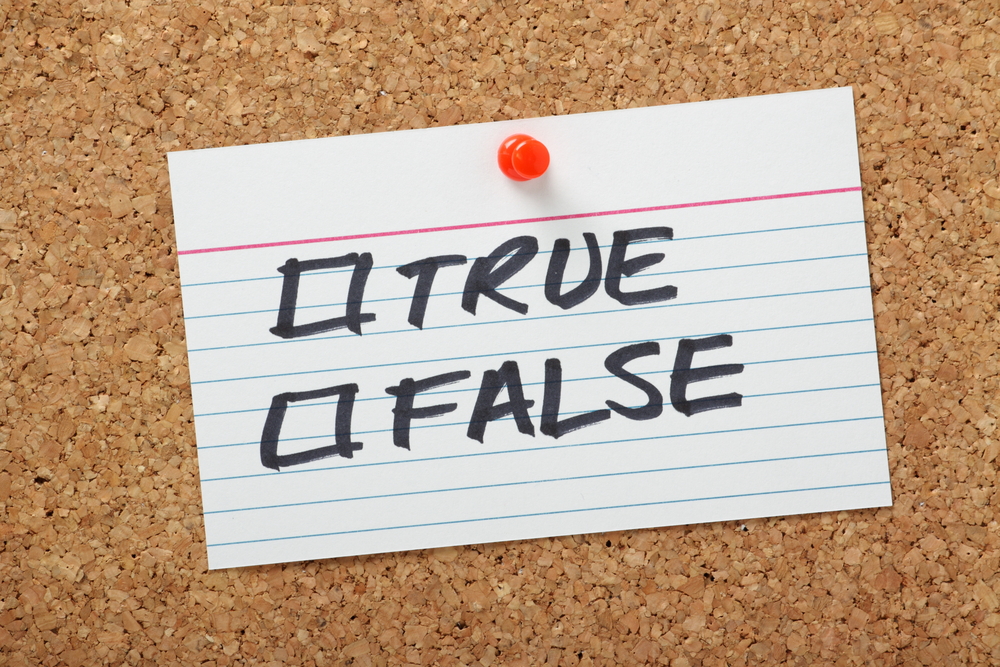
Quick Answer: What Is Sustainable Branding and Why Does It Matter for Australian Businesses?
Sustainable branding involves integrating environmental, social, and economic responsibility into every aspect of a brand's identity, operations, and communications—not just marketing messaging. For Australian businesses in 2025, this isn't merely ethical positioning; it's survival. With ASIC imposing penalties up to $12.9 million for misleading environmental claims, and the ACCC intensifying greenwashing enforcement since 2022, companies must substantiate every sustainability claim with verifiable data. Authentic sustainable branding requires transparency in supply chains, measurable reduction targets, third-party verification, and consistent actions that match communications. Australian consumers increasingly prioritise sustainability when making purchasing decisions, with 78% considering environmental factors according to recent studies. Businesses implementing genuine sustainable practices report improved brand loyalty, reduced operational costs up to 25% over three years, and competitive advantages in markets where authenticity separates leaders from followers. The key is moving beyond superficial "green" messaging to embed sustainability into company DNA—from sourcing and production to packaging and customer engagement.
Key Takeaways: Building Authentic Sustainable Brands in Australia
Understanding the Regulatory Landscape: Australian regulators have made greenwashing a top enforcement priority, with ASIC and ACCC taking aggressive action against misleading environmental claims. Since 2022, ASIC has issued 19 infringement notices and achieved 37 corrective disclosure outcomes. Major penalties include Vanguard ($12.9 million), Mercer ($11.3 million), and ongoing proceedings against Clorox (proposed $8.25 million). The ACCC's guidance requires environmental claims to be truthful, transparent, accurate, and substantiated with scientific evidence. Companies cannot rely on disclaimers to counteract misleading headline claims. Mandatory climate-related disclosures commenced January 2025, increasing scrutiny further.
Five Pillars of Authentic Sustainable Branding:
- Transparency: Provide complete supply chain visibility, including sourcing, manufacturing conditions, and environmental impact data
- Measurable Goals: Set SMART (Specific, Measurable, Achievable, Relevant, Time-bound) sustainability targets with regular progress reporting
- Third-Party Verification: Obtain independent certifications and audits to substantiate claims
- Holistic Integration: Embed sustainability across all operations, not just marketing—from product design through end-of-life disposal
- Stakeholder Engagement: Involve customers, employees, suppliers, and communities in sustainability journey through authentic dialogue
Common Greenwashing Traps to Avoid: Vague terminology without specifics ("eco-friendly," "green," "natural"), cherry-picking data whilst hiding negative impacts, using green imagery that doesn't reflect actual practices, making claims without reasonable scientific basis, overstating minor improvements, and creating false impressions through selective disclosure.
Implementation Strategy: Conduct comprehensive sustainability audit identifying current environmental footprint, establish baseline metrics across energy, waste, water, and emissions, set realistic improvement targets aligned with industry standards, implement changes systematically starting with highest-impact areas, document everything with third-party verification where possible, communicate progress honestly including challenges and setbacks, and engage stakeholders throughout the journey.
.jpg)
The Greenwashing Crisis: Why Australian Businesses Must Act Now
Australia's corporate regulators have drawn a line in the sand. The era of unsubstantiated environmental claims and superficial green marketing has ended, replaced by an enforcement regime demanding authentic, verifiable sustainability credentials. The numbers tell a stark story: multimillion-dollar penalties, court proceedings against household names, and a regulatory framework that treats greenwashing as seriously as financial misconduct.
The shift reflects broader changes in consumer consciousness and regulatory philosophy. Australian regulators have intensified actions in the greenwashing space, with ASIC achieving its largest penalty to date—$12.9 million against Vanguard—for misleading ESG claims. The Australian Competition and Consumer Commission has similarly ramped up enforcement, conducting internet sweeps, issuing warnings, publishing guidance, and launching proceedings against companies making unsubstantiated environmental representations.
These aren't isolated incidents targeting only massive corporations. ASIC's surveillance activities have resulted in 19 infringement notices since October 2022, with over 50% issued between April 2023 and June 2024 alone. The message reverberates through boardrooms nationwide: greenwashing carries real consequences, and regulators possess both the tools and determination to pursue misleading environmental claims aggressively.
For Australian businesses navigating digital marketing and social media marketing strategies, this regulatory intensity creates both challenges and opportunities. Companies genuinely committed to sustainability can differentiate themselves in crowded markets, whilst those tempted by superficial green marketing face existential risks. The question isn't whether to embrace sustainable branding—it's how to do so authentically, strategically, and in compliance with Australia's rigorous enforcement environment.
Understanding Australia's Greenwashing Enforcement Regime
The legal framework governing environmental claims in Australia centres on existing consumer protection and corporate disclosure laws, applied with increasing rigour to sustainability representations. The Australian Consumer Law prohibits misleading or deceptive conduct, whilst the Corporations Act and ASIC Act contain specific prohibitions against false statements regarding financial products—including those marketed with ESG credentials.
ACCC's Role and Enforcement Priorities
The Australian Competition and Consumer Commission has identified consumer and fair-trading issues relating to environmental claims as a compliance and enforcement priority since 2022. This focus has evolved from education and warnings to active litigation. In late 2023, the ACCC published comprehensive guidance for businesses on making environmental claims, establishing clear expectations for truthfulness, accuracy, and substantiation.
The ACCC's approach emphasises that headline environmental claims must be accurate on their face—explanatory text or disclaimers cannot cure fundamentally misleading representations. The regulator's case against Clorox Australia illustrates this principle. Clorox advertised kitchen and garbage bags as containing "50% ocean plastic," creating the impression that materials were collected from oceans or seas. In reality, the recycled plastic came from communities up to 50 kilometres from shorelines. The distinction mattered. Despite explanatory text, the headline claim misled consumers about the product's environmental credentials.
ACCC Chair Gina Cass-Gottlieb has signalled continued vigilance, stating the regulator has "a number of in-depth greenwashing investigations" underway. For businesses, this means environmental claims warrant the same rigorous substantiation as any other product representation, backed by scientific evidence, testing, and documentary proof.

ASIC's Greenwashing Crackdown
The Australian Securities and Investments Commission focuses primarily on financial products and corporate disclosures, making it particularly relevant for superannuation funds, investment managers, and publicly listed companies. ASIC's greenwashing enforcement has been aggressive and successful, with the regulator winning every civil penalty proceeding commenced since 2023.
The Active Super case exemplifies ASIC's approach. The superannuation fund represented that it had "eliminated" investments in gambling, coal mining, oil tar sands, and Russian securities following Ukraine's invasion. The court found these representations false—Active Super had, in fact, invested either directly or indirectly in precisely the securities it claimed to exclude. Critically, the court noted that Active Super's language was "unequivocal," using phrases like "No way" the fund would invest in certain areas, and promising to "not invest" or "eliminate" these holdings.
The lesson extends beyond superannuation. Any business making categorical environmental or ethical claims must ensure absolute accuracy. Partial compliance, aspirational goals presented as current reality, or screening processes with exceptions all create liability when represented as comprehensive policies. ASIC has made clear it will scrutinise the gap between marketing representations and operational reality.
Mandatory Climate Disclosures: The New Frontier
Commencing January 2025, Australia implemented mandatory climate-related financial disclosure requirements for large businesses and financial institutions. These requirements, aligned with international standards, demand public reporting on climate risks, governance, strategies, and emissions. For businesses subject to these disclosures, sustainability is no longer voluntary brand positioning—it's regulatory compliance.
The mandatory disclosure regime intersects directly with greenwashing enforcement. Companies reporting climate strategies, reduction targets, or sustainability initiatives in mandatory disclosures create benchmarks against which marketing claims will be measured. Inconsistencies between regulatory filings and public communications create audit trails for regulators investigating potential greenwashing. Moreover, the Australian government has allocated additional funding to ASIC specifically for investigating and taking enforcement action against greenwashing and sustainability-related misconduct.

The Business Case: Why Authentic Sustainability Drives Success
Beyond regulatory compliance, authentic sustainable branding delivers tangible business benefits. Consumer research consistently demonstrates that environmental responsibility influences purchasing decisions, brand loyalty, and willingness to pay premium prices. However, these benefits accrue only to brands demonstrating genuine commitment—consumers have become sophisticated at detecting greenwashing and punish companies caught making false claims.
Consumer Expectations and Market Demand
Recent studies indicate that 78% of consumers consider sustainability when making purchasing decisions, with particularly strong preferences among younger demographics. Gen Z and Millennials demand transparency and authentic action, using digital channels to research brands, share information, and coordinate responses to perceived greenwashing. These consumers don't merely prefer sustainable brands—they actively investigate claims, scrutinise corporate behaviour, and mobilise against companies perceived as disingenuous.
Older demographics demonstrate different but equally significant sustainability preferences, prioritising trust, reliability, and long-term commitment over trendy positioning. For these consumers, sustainable branding means demonstrating enduring dedication to environmental stewardship, backed by decades of consistent action rather than recent conversions driven by market trends.
The implications for social media marketing are profound. Digital platforms enable rapid information sharing, making it impossible for brands to present different faces to different audiences. A sustainability claim made in one market reaches global audiences instantly, creating expectations for consistent behaviour across all touchpoints. Brands discovered making unsubstantiated environmental claims face viral backlash, with negative content spreading faster and further than positive messaging ever could.

The Financial Benefits of Authentic Sustainability
Sustainable digital practices can reduce operational costs by up to 25% over three years, according to Carbon Trust research. These savings stem from energy efficiency, waste reduction, optimised resource utilisation, and streamlined processes. Companies implementing comprehensive sustainability programmes frequently discover that environmental responsibility and economic efficiency align more than conventional wisdom suggests.
Beyond cost savings, authentic sustainable branding creates competitive advantages. In markets where consumers struggle to differentiate functionally similar products, verified environmental credentials provide clear reasons to choose one brand over alternatives. This differentiation becomes particularly valuable in premium segments, where consumers demonstrate willingness to pay higher prices for products aligned with their values.
Brand loyalty represents another significant benefit. Consumers who connect with brands on values beyond product attributes demonstrate greater loyalty, higher lifetime value, and increased advocacy. These customers become brand ambassadors, recommending products to friends, defending brands against criticism, and providing valuable feedback for continuous improvement. However, this loyalty is contingent on authenticity—discovered greenwashing destroys trust and transforms advocates into vocal critics.
Building Authentic Sustainable Brands: Strategic Framework
Transitioning from conventional branding to authentic sustainability requires systematic approach, genuine commitment, and willingness to prioritise long-term value over short-term positioning. The following framework provides actionable steps for Australian businesses seeking to build credible sustainable brands.

Step 1: Conduct Comprehensive Sustainability Audit
Before making any environmental claims, businesses must understand their current sustainability profile across all operations. This audit should examine energy consumption, waste generation, water usage, emissions, supply chain practices, product lifecycle impacts, and packaging. The goal isn't perfection—it's honest assessment establishing baseline metrics for improvement.
Engage third-party auditors where possible to ensure objectivity and credibility. Independent verification provides assurance to regulators, consumers, and stakeholders that assessments reflect genuine conditions rather than optimistic internal evaluations. Document everything meticulously, creating audit trails that substantiate future claims and demonstrate progress over time.
Identify high-impact areas where improvements would generate meaningful environmental benefits and business value. Not every sustainability initiative delivers equal returns—focus resources on changes producing significant reductions in environmental footprint whilst aligning with core business operations and consumer expectations.
Step 2: Set SMART Sustainability Goals
Translate audit findings into specific, measurable, achievable, relevant, and time-bound goals. Vague commitments like "reduce environmental impact" or "become more sustainable" lack the precision needed for authentic sustainability programmes. Instead, establish concrete targets: "reduce Scope 1 and 2 emissions by 30% by 2030," "achieve 100% renewable energy by 2027," or "eliminate single-use plastics from packaging by 2026."
Align goals with established frameworks where possible, such as Science Based Targets initiative, UN Sustainable Development Goals, or industry-specific standards. Recognised frameworks provide credibility, enable comparison with peers, and offer methodological guidance for target-setting and measurement. They also signal to regulators that commitments reflect serious intention rather than arbitrary marketing objectives.
Be realistic about timelines and resources required. Overly ambitious targets that prove unachievable damage credibility as severely as greenwashing. It's better to set conservative goals, achieve them ahead of schedule, and revise upward than to announce aspirational targets that become embarrassing failures. Australian regulators have specifically targeted companies making representations about future sustainability characteristics without reasonable basis for believing those timelines achievable.
Step 3: Implement Changes Systematically
With clear goals established, develop implementation plans addressing people, processes, technology, and culture. Sustainability transformation touches every aspect of operations, requiring coordination across departments, investment in new capabilities, and often fundamental changes to business models.
Prioritise changes by impact and feasibility. Quick wins demonstrate momentum and build organisational confidence, whilst longer-term structural changes proceed in parallel. For example, switching to renewable energy or implementing recycling programmes might achieve rapid results, whilst redesigning products for circular economy principles requires sustained effort over years.
Engage employees throughout implementation. Sustainability programmes succeed when workforce understands rationale, contributes ideas, and takes ownership of outcomes. Regular communication, training, recognition of contributions, and transparency about challenges all foster the cultural change necessary for authentic sustainability.
Document progress meticulously. Maintain records of initiatives undertaken, investments made, results achieved, and lessons learned. This documentation serves multiple purposes: demonstrating genuine commitment to regulators, providing content for authentic sustainability communications, identifying successful approaches for scaling, and creating institutional knowledge surviving personnel changes.
Step 4: Obtain Independent Verification
Third-party certification and verification transform internal sustainability efforts into credible external claims. Certifications like B Corp, Carbon Neutral, Fair Trade, Organic, FSC, or industry-specific standards provide independently verified assurance that practices meet recognised standards.
The value extends beyond marketing credibility. Certification processes typically involve rigorous assessment, identifying gaps between current practices and standards, and driving continuous improvement. External auditors bring expertise, best practices from other organisations, and objective perspectives that enhance programme quality beyond what internal teams achieve alone.
Choose certifications relevant to your industry, products, and customer expectations. A proliferation of environmental labels and certifications exists—some more rigorous than others. Prioritise well-established, independently audited certifications with transparent standards over proprietary or self-declared labels lacking credibility with consumers and regulators.
Step 5: Communicate Authentically
With genuine sustainability practices implemented and verified, businesses can confidently communicate environmental credentials. However, communication strategy must reflect the same authenticity as underlying practices. Sustainable branding requires transparency, authenticity in demonstrating commitment through actions, and engagement involving stakeholders in the sustainability journey.
Lead with specifics rather than generalities. Instead of claiming to be "eco-friendly" or "sustainable," describe concrete initiatives: "Our packaging uses 100% recycled materials, reducing virgin plastic consumption by 50 tonnes annually." Specific claims enable verification, demonstrate genuine understanding of environmental impacts, and resonate more authentically with sceptical consumers.
Acknowledge challenges and areas for improvement. No company has achieved perfect sustainability—acknowledging limitations whilst demonstrating commitment to progress builds credibility. Consumers appreciate honesty about the sustainability journey, understanding that transformation takes time. This transparency contrasts sharply with greenwashing's tendency toward selective disclosure and exaggerated claims.
Provide accessible evidence supporting claims. Link to third-party certifications, publish sustainability reports, share data on progress toward goals, and invite stakeholder engagement. Modern consumers expect the ability to verify environmental claims independently—brands resisting transparency raise suspicion regardless of actual practices.
Use digital marketing channels strategically to tell sustainability stories. Social media enables ongoing dialogue with stakeholders, sharing behind-the-scenes glimpses of sustainability initiatives, celebrating milestones, soliciting feedback, and demonstrating authentic commitment through consistent communication over time. However, ensure social media content aligns perfectly with practices—any inconsistency will be amplified and criticised publicly.

Common Greenwashing Pitfalls and How to Avoid Them
Even businesses committed to genuine sustainability risk inadvertent greenwashing through communication missteps, incomplete understanding of regulatory requirements, or excessive enthusiasm in describing environmental efforts. Understanding common pitfalls enables proactive avoidance.
The Sin of Vagueness
Claims like "environmentally friendly," "natural," "green," or "sustainable" without specific supporting details constitute the most common greenwashing trap. These terms lack precise meaning, enabling multiple interpretations and creating expectations businesses may not fulfil. Australian regulators scrutinise vague claims intensely, requiring substantiation for any environmental representation.
Solution: Replace vague terminology with specific, measurable claims. Instead of "eco-friendly packaging," state "packaging made from 80% post-consumer recycled content, fully recyclable in Australian kerbside collection programmes." Specificity enables verification and demonstrates genuine understanding of environmental attributes.
The Sin of Hidden Trade-Offs
Highlighting one environmental attribute whilst ignoring significant negative impacts elsewhere constitutes selective disclosure that can mislead consumers. For example, promoting products as "made from recycled materials" whilst ignoring energy-intensive manufacturing, long-distance shipping, or toxic chemicals in production creates incomplete and potentially misleading impressions.
Solution: Adopt lifecycle thinking, considering environmental impacts across entire product journeys from raw material extraction through end-of-life disposal. Conduct lifecycle assessments identifying all significant environmental impacts, and communicate holistically rather than cherry-picking favourable attributes. If trade-offs exist—and they nearly always do—acknowledge them whilst explaining why overall environmental profile represents improvement.
The Sin of Irrelevance
Claiming environmental benefits that, whilst technically true, provide no meaningful environmental advantage. For example, advertising products as "CFC-free" when CFCs have been banned for decades, or claiming benefits required by law as though they represent voluntary commitments.
Solution: Focus communications on genuine points of differentiation—environmental attributes that distinguish your offerings from competitors and provide real benefits beyond regulatory baselines. If you've exceeded requirements significantly, explain how and why. If you're simply complying with law, consider whether environmental positioning makes sense or whether other brand attributes provide stronger foundations.

The Sin of Unproven Claims
Making environmental assertions without scientific substantiation or third-party verification. Australian regulators require reasonable basis for all environmental claims—companies must possess evidence supporting representations before making them publicly.
Solution: Substantiate every environmental claim with verifiable data, testing, certifications, or other objective evidence before publication. When scientific consensus exists, align claims with established methodologies. For novel claims lacking established assessment frameworks, engage recognised experts or research institutions to develop credible substantiation. Never extrapolate beyond available evidence or present aspirational goals as current achievements.
The Sin of False Labels
Using imagery, terminology, or design elements that create impression of third-party certification or endorsement where none exists. Self-created "eco-labels" or marketing imagery mimicking legitimate certification marks mislead consumers and violate regulatory requirements.
Solution: Use only legitimate, independently verified certifications and marks. If internal sustainability standards exist, clearly identify them as company-specific rather than external certifications. Design marketing materials that celebrate environmental achievements without mimicking the visual language of third-party certification programmes.
Sector-Specific Considerations for Australian Businesses
Different industries face unique sustainability challenges and opportunities, requiring tailored approaches to authentic environmental branding.
Retail and Consumer Goods
Retail businesses must address supply chain transparency, packaging sustainability, product lifecycle impacts, and operational emissions. Consumer goods companies face particular scrutiny given direct customer relationships and tangible product impacts. Focus areas include transitioning to sustainable packaging materials, providing detailed product information enabling informed consumer choices, implementing take-back or recycling programmes, and ensuring supply chain labour and environmental standards.
Australian fashion retailers have faced significant greenwashing allegations, with investigations targeting claims about sustainable fabrics, ethical manufacturing, or environmental benefits. The sector demonstrates particular need for rigorous substantiation, third-party verification, and lifecycle assessment.
Financial Services
Superannuation funds, investment managers, and banks marketing ESG products face intense regulatory scrutiny. ASIC's greenwashing enforcement has concentrated heavily on financial services, resulting in Australia's largest sustainability-related penalties. Financial institutions must ensure investment screening processes match representations, ESG criteria applied consistently to all holdings, and marketing materials accurately reflect fund compositions and strategies.
The Vanguard and Active Super cases illustrate that categorical claims ("we do not invest in...") require absolute accuracy. If screening processes involve judgement, exceptions, or evolving criteria, communications must reflect that nuance rather than presenting exclusions as absolute.
Food and Agriculture
Food producers and agricultural businesses can leverage genuine sustainability practices as powerful differentiators. However, claims about organic production, regenerative agriculture, carbon sequestration, or animal welfare must be rigorously substantiated. Relevant certifications include Organic, Free Range, Carbon Neutral, and industry-specific standards.
Pay particular attention to supply chain claims. Representations about farming practices, animal welfare, or environmental impacts must reflect reality throughout supply chains, not just in directly controlled operations. Where supply chain visibility remains limited, acknowledge that transparently rather than making unsubstantiated claims.

Technology and Digital Services
Technology companies often emphasise reduced physical footprint compared to traditional businesses. However, data centres, electronic waste, embodied emissions in hardware manufacturing, and energy consumption create significant environmental impacts requiring honest assessment and communication.
Focus areas include renewable energy for data centres and operations, product longevity and repairability, e-waste management programmes, and supply chain due diligence addressing resource extraction and manufacturing impacts. Technology companies benefit from sophisticated data capabilities enabling detailed measurement and reporting of environmental metrics—leverage this advantage to demonstrate authentic commitment.
The Role of Storytelling in Authentic Sustainable Branding
Data, certifications, and specific claims provide necessary foundations for credible sustainability communications. However, connecting emotionally with consumers requires compelling storytelling that brings environmental commitment to life whilst maintaining absolute authenticity.
Humanising Sustainability
Stories chronicling environmental and human impact demonstrate authenticity and accountability. Rather than abstract discussions of emissions reductions or waste diversion rates, share stories of people driving sustainability initiatives—farmers implementing regenerative practices, factory workers benefiting from improved conditions, engineers designing innovative solutions, or customers using products in environmentally conscious ways.
These human-centred narratives make sustainability tangible and relatable. They demonstrate that environmental commitment extends beyond corporate pronouncements to affecting real people's lives positively. Moreover, they provide authentic content for social media marketing, creating shareable stories that resonate emotionally whilst maintaining factual accuracy.

Showing the Journey, Not Just the Destination
Consumers appreciate transparency about sustainability challenges and the ongoing nature of environmental improvement. Rather than presenting sustainability as achieved status, frame it as continuous journey with milestones, setbacks, learning, and evolution.
Share stories about challenges encountered implementing sustainability initiatives, solutions developed collaboratively with stakeholders, and lessons learned from failures. This vulnerability builds trust, demonstrating genuine commitment rather than superficial positioning. It also provides realistic expectations, acknowledging that sustainability transformation requires sustained effort rather than quick fixes.
Celebrating Collective Progress
Position customers, employees, suppliers, and communities as partners in sustainability journey rather than passive recipients of corporate environmental initiatives. Highlight customer contributions—whether participating in recycling programmes, choosing sustainable options, or providing feedback shaping environmental strategies.
Employee stories demonstrate internal culture supporting sustainability, making environmental commitment credible. Supplier partnerships showcase collaborative approaches to supply chain sustainability. Community engagement illustrates broader stakeholder orientation beyond narrow commercial interests.
Looking Ahead: The Future of Sustainable Branding in Australia
Regulatory intensity around greenwashing will continue increasing as mandatory climate disclosures mature, enforcement agencies gain experience, and public awareness grows. Australian businesses should expect:
Increased Regulatory Sophistication: Regulators are developing deeper expertise in sustainability assessment, making it harder for superficial claims to pass scrutiny. Enforcement will target increasingly subtle forms of greenwashing, including selective disclosure, aspirational framing of current performance, and misleading comparisons.
Technology-Enabled Verification: Blockchain, IoT sensors, satellite imagery, and AI analytics are enabling unprecedented supply chain transparency and verification of environmental claims. Consumers and regulators will increasingly leverage these technologies to validate corporate sustainability representations.
Consumer Activism: Digital platforms empower consumers to organise collective responses to perceived greenwashing, amplify concerns, and exert pressure on brands. Companies caught making false environmental claims face reputational consequences extending far beyond regulatory penalties.
Competitive Differentiation: As more businesses adopt sustainability positioning, authentic environmental credentials provide competitive advantages. However, raising the bar collectively means yesterday's leadership becomes tomorrow's baseline expectation. Continuous improvement becomes essential for maintaining differentiation.
Integration with Core Strategy: Sustainability is transitioning from marketing function to strategic imperative, integrated with risk management, innovation, stakeholder relations, and long-term value creation. Boards and senior leadership must treat environmental performance with same rigour as financial performance.
Your Sustainable Branding Roadmap
Australian businesses navigating sustainability branding face complex regulatory environment, sceptical consumers, and genuine environmental imperatives demanding action. Success requires authentic commitment, systematic implementation, rigorous substantiation, and transparent communication.
Begin with honest assessment of current environmental performance. Set realistic, measurable goals aligned with established frameworks. Implement changes systematically across operations, not just marketing. Obtain independent verification providing credibility. Communicate specifically, transparently, and authentically about both achievements and ongoing challenges.
Avoid greenwashing traps through vigilance about vague claims, hidden trade-offs, irrelevant assertions, unproven representations, and false certifications. Understand sector-specific considerations affecting your industry. Leverage storytelling to connect emotionally whilst maintaining factual accuracy. Prepare for increasing regulatory sophistication and consumer expectations.
Most importantly, recognise that sustainable branding isn't separate from business strategy—it's fundamental to long-term viability, competitive positioning, and stakeholder trust. Companies genuinely committed to environmental responsibility, implementing measurable improvements, and communicating authentically will thrive. Those tempted by superficial green marketing face mounting risks as Australian regulators demonstrate unwavering commitment to eliminating greenwashing.

Ready to Build an Authentic Sustainable Brand?
Navigating Australia's complex regulatory environment whilst building genuine sustainability credentials requires expertise, strategic thinking, and commitment to authenticity. Maven Marketing Co specialises in helping Australian businesses develop credible sustainable branding strategies that drive results without greenwashing risks.
Our team understands ACCC and ASIC requirements, consumer expectations, and industry best practices. We'll help you audit current sustainability performance, set achievable goals, implement meaningful changes, obtain appropriate certifications, and communicate authentically across digital and traditional channels.
Don't risk multimillion-dollar penalties or reputational damage from unsubstantiated environmental claims. Don't miss competitive advantages authentic sustainability provides.
Visit mavenmarketingco.com.au today to schedule your sustainable branding consultation. Let's build a brand that's genuinely good for business and the planet—one that withstands regulatory scrutiny, earns consumer trust, and drives long-term success through authentic environmental commitment.
Your sustainability journey starts now. Let's make it real, measurable, and genuinely impactful.









